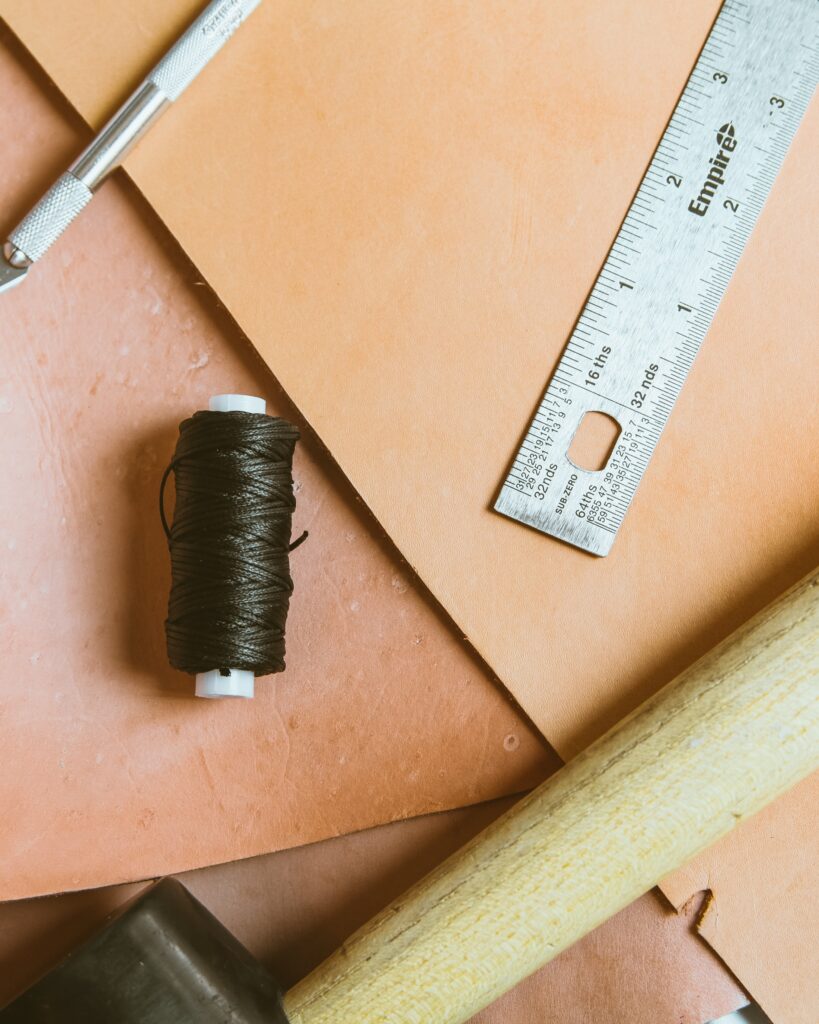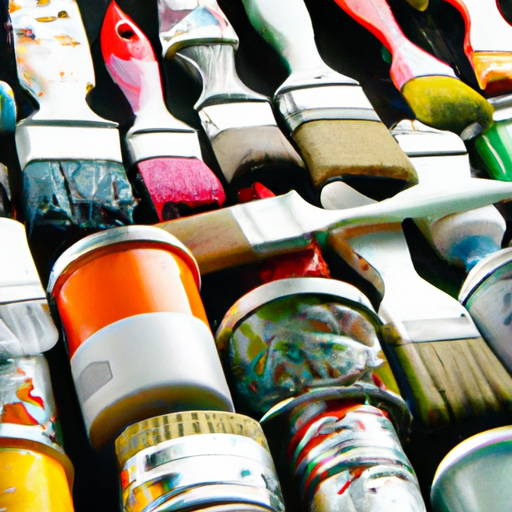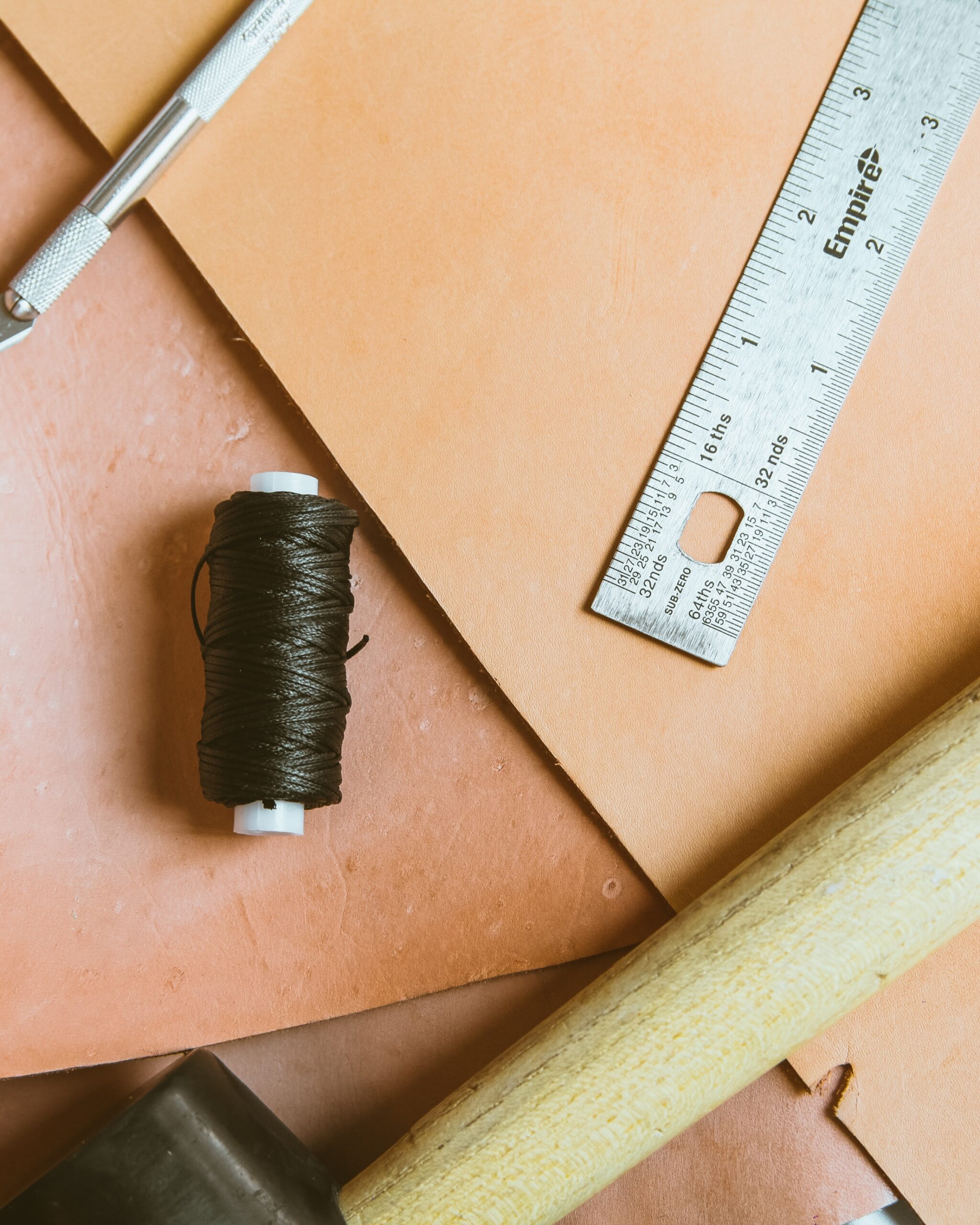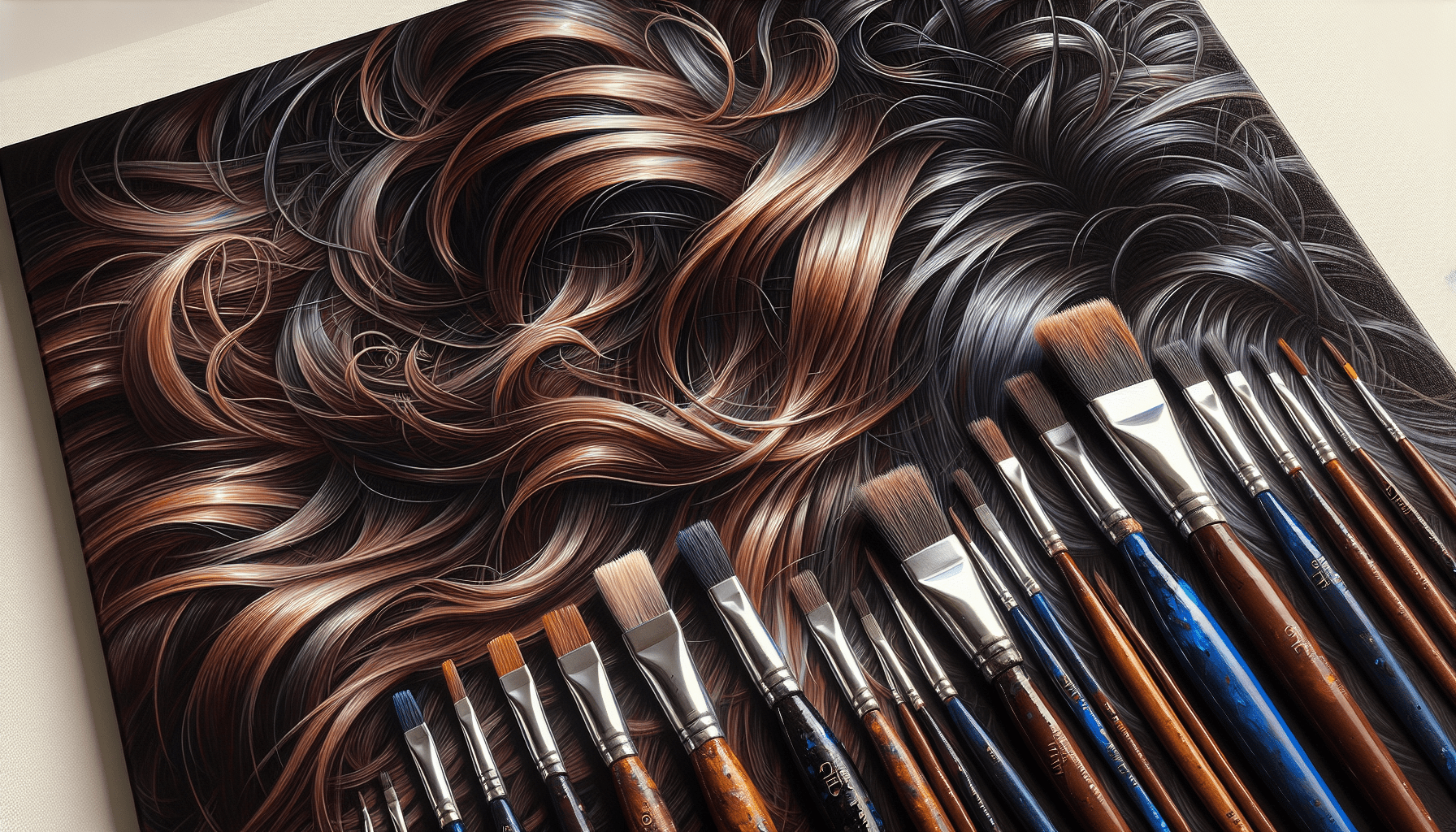Have you ever wondered how to effectively seal acrylic paint on leather? If so, you’re in luck! In this article, we’ll explore various options that you can use to seal acrylic paint on leather, ensuring that your creations remain vibrant and long-lasting. Whether you’re a seasoned artist or just starting out, finding the right sealant for your leather projects is essential, and we’re here to help you make the best choice. So, let’s dive in and discover the perfect solution for sealing acrylic paint on leather!
Methods for Sealing Acrylic Paint on Leather
Acrylic paint is a versatile medium that allows artists to create vibrant and long-lasting designs on various surfaces, including leather. However, to ensure the longevity of your artwork and protect it from wear, moisture, and stains, it is crucial to seal the acrylic paint on the leather surface. There are several effective methods for sealing acrylic paint on leather, each offering its own unique benefits. In this article, we will explore ten different methods that you can use to seal acrylic paint on leather and provide you with a comprehensive guide for each method.
Using Acrylic Mediums
Acrylic mediums are specially formulated products that can enhance the properties of acrylic paint and provide additional protection to the painted surface. When it comes to sealing acrylic paint on leather, using acrylic mediums is a popular and effective method. There are several types of acrylic mediums available in the market, including matte, gloss, and satin finishes. These mediums can be mixed with acrylic paint to create a more flexible and durable sealant. To apply acrylic mediums on leather, follow these steps:
- Choose a suitable acrylic medium that matches the desired finish and level of protection you want for your leather artwork.
- Mix the acrylic medium and acrylic paint in a separate container, following the manufacturer’s instructions.
- Apply the mixture evenly on the leather surface using a soft brush or sponge. Make sure to cover the painted area thoroughly.
- Allow the first coat to dry completely, and then apply additional coats if needed. The number of coats may vary depending on the desired level of protection and the type of leather.
- After the final coat has dried, gently buff the surface with a soft cloth to achieve a smooth and professional look.
Using acrylic mediums provides a flexible and durable seal on leather, making it an excellent choice for preserving your acrylic paint artwork.
Using Leather Sealant or Finish
Another effective method for sealing acrylic paint on leather is by using a leather sealant or finish. Leather sealants are specially designed products that are specifically formulated to provide protection and enhance the durability of leather surfaces. They can create a protective layer on top of the acrylic paint, safeguarding it from external elements. To seal acrylic paint on leather using a leather sealant or finish, follow these steps:
- Select a high-quality leather sealant or finish that is compatible with acrylic paint and suitable for the type of leather you are working with.
- Apply the sealant or finish onto a soft cloth or sponge.
- Gently rub the sealant or finish onto the painted leather surface in a circular motion. Ensure that the entire area is covered, including any cracks or crevices.
- Allow the first coat to dry completely, and then check if another coat is necessary. Repeat the application process for an additional coat if desired.
- After the final coat has dried, gently buff the surface with a soft cloth to achieve a smooth and glossy finish.
Using a leather sealant or finish not only seals and protects the acrylic paint but also enhances the overall appearance of the leather, giving it a professional and polished look.
Using Leather Varnish
Similar to a leather sealant or finish, a leather varnish can provide an effective seal on acrylic paint on leather. Leather varnishes are typically oil-based and offer durability and protection against moisture and stains. To seal acrylic paint on leather using a leather varnish, follow these steps:
- Choose a suitable leather varnish that complements the type of leather and desired finish.
- Using a soft brush or cloth, begin applying the leather varnish onto the painted surface. Ensure that the varnish is spread evenly and covers the entire area.
- Allow the first coat to dry completely, and then assess if additional coats are needed. Apply additional coats following the same method.
- After the final coat has dried, gently buff the surface with a soft cloth to achieve a smooth and shiny finish.
Using a leather varnish can provide a protective barrier on the acrylic paint, preventing it from fading, cracking, or peeling over time.
Using Acrylic Sealant Sprays
Acrylic sealant sprays offer a convenient and easy way to seal acrylic paint on leather. These sprays contain a clear protective coating that can effectively seal and protect the painted surface. To seal acrylic paint on leather using acrylic sealant sprays, follow these steps:
- Select a high-quality acrylic sealant spray that is specifically designed for use on painted surfaces, including leather.
- Shake the bottle vigorously to ensure that the product is well-mixed.
- Hold the spray can approximately 6-8 inches away from the leather surface.
- Apply multiple thin coats of the sealant spray, allowing each coat to dry completely before applying the next one.
- To test for any color alteration, spray a small area of the leather and allow it to dry. If it alters the color, choose a different sealant spray or proceed with caution.
- If necessary, repeat the application process until you achieve the desired level of protection and finish.
Acrylic sealant sprays provide a fast-drying and hassle-free method of sealing acrylic paint on leather, making it a popular choice among artists and crafters.
Using Mod Podge
Mod Podge is a popular all-in-one adhesive, sealer, and finish that is widely used in various crafting projects. While primarily designed for paper crafts, Mod Podge can also be used to seal acrylic paint on leather. Mod Podge offers a range of formulas, including matte and gloss finishes, allowing you to choose the desired look for your leather artwork. To seal acrylic paint on leather using Mod Podge, follow these steps:
- Select a Mod Podge formula that is suitable for use on leather and matches the desired finish.
- Using a brush, apply a thin layer of Mod Podge evenly across the painted leather surface. Make sure to cover the entire area.
- Allow the first layer to dry completely before applying additional layers. If desired, you can add multiple layers for increased protection and a glossy finish.
- If any imperfections or brush strokes are visible after drying, gently sand the surface using sandpaper to achieve a smooth finish.
Mod Podge provides a versatile and affordable option for sealing acrylic paint on leather, allowing you to protect your artwork while adding a touch of creativity to your leather projects.
Using Resolene
Resolene is a popular leather finish that offers excellent protection and durability. It creates a clear, waterproof, and flexible seal on leather surfaces, making it an ideal choice for sealing acrylic paint on leather. Resolene also enhances the color vibrancy and provides a satin or gloss finish, depending on the desired look. To seal acrylic paint on leather using Resolene, follow these steps:
- Purchase Resolene leather finish from a reputable supplier or manufacturer.
- Optionally, dilute Resolene with water according to the manufacturer’s instructions, depending on the desired level of gloss and flexibility.
- Dip a sponge or brush into the Resolene solution and apply it evenly onto the painted leather surface. Make sure to cover the entire area thoroughly.
- Allow the first coat to dry completely before deciding if additional coats are necessary. Apply additional coats if desired for increased protection and finish.
- After the final coat has dried, take a soft cloth and gently buff the surface to enhance the shine and ensure a smooth finish.
Using Resolene as a sealant on acrylic paint offers durability, flexibility, and a professional-looking finish, ensuring the longevity of your leather artwork.
Using Acrylic Fabric Medium
Acrylic fabric medium is a product specifically designed to improve the adhesion and flexibility of acrylic paint on fabric surfaces. While primarily used for fabric, it can also be utilized to seal acrylic paint on leather. Acrylic fabric medium allows the paint to adhere better to the leather surface, reducing the chances of cracking or peeling. To seal acrylic paint on leather using acrylic fabric medium, follow these steps:
- Choose an acrylic fabric medium that is compatible with leather and acrylic paint.
- Mix the acrylic fabric medium with acrylic paint in a separate container, following the recommended ratios provided by the manufacturer.
- Apply the mixture onto the leather surface using a soft brush or sponge, ensuring an even and smooth coating.
- Allow the first layer to dry completely, and then assess if additional coats are necessary. Apply more coats if needed for maximum protection.
- Once the desired level of protection has been achieved, leave the painted leather to dry thoroughly.
Using an acrylic fabric medium can improve the adhesion and flexibility of the acrylic paint on leather, providing a long-lasting seal.
Using Acrylic Gloss Medium
Acrylic gloss medium is another option for sealing acrylic paint on leather. It not only seals the paint but also enhances the appearance with a glossy finish. The gloss medium provides additional protection against wear, moisture, and stains. To seal acrylic paint on leather using acrylic gloss medium, follow these steps:
- Select an acrylic gloss medium that is compatible with both the acrylic paint and leather.
- Mix the acrylic gloss medium with acrylic paint in a separate container, following the recommended ratios provided by the manufacturer.
- Apply the mixed solution onto the leather surface using a soft brush or sponge, ensuring a smooth and even application.
- Allow the first layer to dry completely, and then assess if additional coats are required. Apply more coats if desired for increased protection and a glossier finish.
- Once the final coat has dried, take a soft cloth and gently buff the surface to bring out the shine and achieve a polished look.
Using acrylic gloss medium not only seals the acrylic paint on leather but also adds a touch of brilliance, making your artwork stand out.
Using Leather Paint Sealant
If you are working with leather-specific paints, a leather paint sealant can be an excellent choice for sealing acrylic paint on leather. These sealants are designed specifically for use on leather and can provide superior protection and durability. Follow these steps to seal acrylic paint on leather using a leather paint sealant:
- Select a high-quality leather paint sealant that is compatible with both the acrylic paint and the type of leather you are working with.
- Apply the sealant onto the painted leather using a soft cloth or sponge. Ensure that the entire painted area is covered evenly.
- Allow the first coat to dry completely. Assess if additional coats are required based on the desired level of protection and finish.
- Apply additional coats if necessary, following the manufacturer’s instructions for drying times between each coat.
- Once the final coat has dried, gently buff the surface with a soft cloth to enhance the shine.
Using a leather paint sealant specifically designed for leather paints can provide optimal protection and prolong the lifespan of your acrylic paint on leather.
Using Beeswax
Beeswax is a natural wax that has been used for centuries to protect and preserve leather. It creates a waterproof barrier on the leather surface, preventing moisture from penetrating and damaging the acrylic paint. Beeswax also provides a soft sheen and can enhance the overall appearance of the leather. To seal acrylic paint on leather using beeswax, follow these steps:
- Obtain pure beeswax from a reputable supplier or retailer.
- Warm the beeswax using a double boiler or a low heat source until it melts into a liquid form.
- Using a soft cloth or sponge, apply the melted beeswax onto the painted leather surface. Spread it evenly, ensuring full coverage.
- Allow the beeswax to cool and solidify. Once it has hardened, gently remove any excess wax using a clean cloth.
- To achieve a smooth and shiny finish, gently buff the surface with a soft cloth.
Using beeswax as a sealant provides a natural and traditional method of protecting acrylic paint on leather, while also adding a beautiful luster to the finished artwork.

Factors to Consider
When it comes to sealing acrylic paint on leather, there are several factors to consider before choosing the appropriate method. By taking these factors into account, you can ensure that you achieve the desired result while preserving the quality and appearance of your leather artwork.
Durability and Flexibility
The durability and flexibility of the sealant are important factors to consider, especially when working with leather. Leather is a natural material that expands and contracts with temperature and humidity changes. Therefore, it is crucial to choose a sealant that can withstand these conditions and remain flexible without cracking or peeling off.
Color Alteration
Sealing acrylic paint on leather can sometimes result in color alteration. Some sealants or finishes may darken or lighten the initial color of the paint. It is essential to test the sealant on a small, inconspicuous area of the leather before applying it to the entire surface.
Gloss or Matte Finish
Consider the desired finish for your leather artwork. Some sealants offer a gloss finish, while others provide a matte or satin finish. Choose a sealant that matches your artistic vision and complements the overall aesthetic of the artwork.
Protection from Moisture and Stains
One of the primary purposes of sealing acrylic paint on leather is to protect it from moisture and stains. Consider the level of protection needed for your artwork based on its intended use and exposure. Certain sealants and finishes offer superior water resistance and stain repellency, ensuring the longevity of your leather artwork.
Application Process
The application process of the sealant should also be taken into consideration. Some methods may require more time and effort, while others offer a quick and convenient application process. Choose a method that aligns with your skills, resources, and preferences.

Preparing the Leather
Before applying any sealant or finish on your leather artwork, it is important to properly prepare the leather surface. By following these steps, you can ensure that the sealant adheres well and provides effective protection for your acrylic paint:
Clean the Surface
Begin by cleaning the leather surface with a mild soap or leather cleaner. Gently wipe away any dirt, dust, or oils using a soft cloth or sponge. Be cautious not to scrub the leather vigorously, as this can damage the surface.
Lightly Sand the Leather
Depending on the condition of the leather and the desired finish, you may choose to lightly sand the surface. Use fine-grit sandpaper and rub it across the leather in a gentle circular motion. This helps in smoothing out any imperfections and creates a slightly textured surface for the sealant to adhere better.
Apply Leather Conditioner
To keep the leather soft, supple, and well-maintained, apply a leather conditioner. This step is especially important if your leather has dried out or appears stiff. Follow the instructions on the leather conditioner product and thoroughly massage it into the leather surface using a clean cloth. Allow the conditioner to penetrate and nourish the leather before proceeding with the sealant application.
By properly preparing the leather surface, you can ensure that the sealant adheres well and provides optimum protection for your acrylic paint.

Conclusion
Sealing acrylic paint on leather is crucial to preserve the longevity and vibrant appearance of your artwork. By selecting the appropriate sealant or finish and following the recommended application process, you can ensure that your acrylic paint remains protected from wear, moisture, and stains. Whether you choose to use acrylic mediums, leather sealants, varnishes, acrylic sealant sprays, Mod Podge, Resolene, acrylic fabric mediums, acrylic gloss mediums, leather paint sealants, or beeswax, each method offers its own unique benefits and considerations. Before sealing your acrylic paint on leather, take into account factors such as durability and flexibility, color alteration, desired finish, protection requirements, and application process. By considering these factors and properly preparing the leather surface, you can confidently seal your acrylic paint on leather, ensuring its longevity and enhancing its overall appearance. Now, armed with this comprehensive guide, you can confidently embark on your leather art projects and enjoy the satisfaction of sealing acrylic paint on leather successfully.




